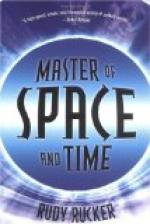Prof. John Trowbridge, of Harvard University, might well be termed the grandfather of wireless telegraphy. He made the first extensive investigation of the subject, and his experiments in sending messages without wires and his discoveries furnished information and inspiration for those who were to follow. His early experiments tested the possibility of using the earth as a conductor. He demonstrated that when an electric current is sent into the earth it spreads from that point in waves in all directions, just as when a stone is cast into a pond the ripples widen out from that point, becoming fainter and fainter until they reach the shore. He further found that these currents could be detected by grounding the terminals of a telephone circuit. Telegraphy through the earth was thus possible. However, the farther the receiving station was from the sending station the wider must be the distance between the telephone terminals and the smaller the current received. Professor Trowbridge did not find it possible to operate his system at a sufficient distance to make it of value, but he did demonstrate that the currents do travel through the earth and that they can be set to carrying messages.
Professor Trowbridge also revived the idea of telegraphing across the Atlantic by utilizing the conductivity of the sea-water to carry the currents. In working out the plan theoretically he discovered that the terminals on the American side would have to be widely separated—one in Nova Scotia and the other in Florida—and that they would have to be connected by an insulated cable. Two widely separated points on the coast of France were suggested for the other terminals. He also calculated that very high voltages would be necessary, and the practical difficulties involved made it seem certain that such a system would cost far too much to construct and to operate to be profitable.
Trowbridge suggested the possibility of using such a system for establishing communication between ships at sea. Ship could communicate with ship, over short distances, during a fog. A trailing wire was to be used to increase the sending and receiving power, and Trowbridge believed that with a dynamo capable of supplying current for a hundred lights, communication could be established at a distance of half a mile.
Not satisfied with the earth or the sea as a medium for carrying the current, Trowbridge essayed to use the air. He believed that this was possible, and that it would be accomplished at no distant date. He believed, however, that such a system could not be operated over considerable distances because of the curvature of the earth. He endeavored to establish communication through the air by induction. He demonstrated that if one coil of wire be set up and a current sent through it, a similar coil facing it will have like currents induced within it, which may be detected with a telephone receiver. He also determined that the currents were strongest in the receiving coil when it was placed in a plane parallel with the sending coil. By turning the receiving coil about until the sound was strongest in the telephone receiver, it was thus possible to determine the direction from which the messages were coming. Trowbridge recognized the great value of this feature to a ship at sea.




